Lapinjärvi 作者: 来源: 发布时间:2021-04-19
一、所属省或是州,具体位置,人口,面积
Lapinjärvi is a municipality of Finland. It is located in the Uusimaaregion. The municipality has a population of 2,655 (31 January 2019)and covers an area of 339.31 square kilometres (131.01 sq mi) of which 9.44 km2 (3.64 sq mi) is water. The population density is 8.05 inhabitants per square kilometre (20.8/sq mi).The municipality is bilingual, with majority being Finnish and minority Swedish speakers.
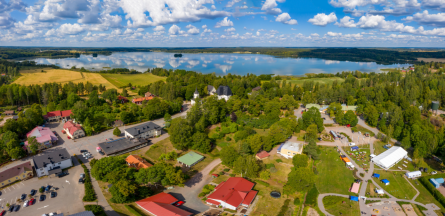
二、自然地理
1.地理条件
Lake Lapinjärvi covers an area of 339.36 km2, belt water bodies 9.48 km2. There are lakes and rivers in its location.Research on world geography is important in the Lapinjärvi area: Porlom II, a measuring point belonging to the Struve chain, is located on the shores of Lake Pyhäjärvi on the shore of Lake Pyhäjärvi. The chain is a UNESCO World Heritage Site. The triangulation tower of the National Land Survey of Finland was also located on the same rock until the mid-1980s.Neighbouring municipalities are Iitti, Kouvola, Loviisa, Myrskylä and Orimattila.Lapinjärvilake is located in the Lapinjärvi.
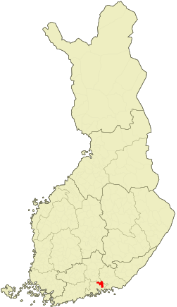
2. 交通情况
The main main road in Lapinjärvi is Highway 6, which was opened in 1961 and runs through Lake Lapinjärvi, south of Kirkonkylä. The most important roads in Lake Lapinjärvi are the regional road 176 between Lapinjärvi and Loviisa, the regional road 174 from Kimonkylä via Artjärvi to Myrskylä, from Porlammi VT-6: and the connecting road 3610 between Iitti.
The Lahti-Loviisa line in the Lapinjärvi area was originally narrow-gauge. Lapinjärvi railway station along the track, the belt of the current unnecessarily stony stairs, is located in Rutum. Rutum and Lipo also have station buildings, but they now function as residential buildings. [57] In the area of Lapinjärvi municipality, there is the current former Myrskylä railway station for private use.
三、经济发展和规模
Lapinjärvi municipal tax rate 19. property tax rate 0.3–0.85, church tax rate 1.85. Budget in 2007:Lapinjärvi's operating expenses in the 2007 budget total € 17,792,090 (an increase of 3.4%) and the value of operating income totals € 4,736,840 (a decrease of 3.0%). After tax revenue and government contributions as well as depreciation, Lapinjärvi's result for the financial year + € 29,250 (decrease of 90.2%).According to the 2008 budget, Lapinjärvi invested EUR 1,458 (growth 16.0%).Annual margin 2008 at a price of € 396,000 or € 134 per person. (2,945 as.). Annual margin with 100% depreciation. The loan amount was 710 € / person. (growth 35.2%)
四、产业特点重点项目
Project east of Helsinki: LAPINJÄRVI, the nobles of a Finnish church village and rural public life in a people-centered community. From Helsinki to the eastern project: LAPINJÄRate
Another main project of Lapinjärvi, the Resource-Wise by People-Oriented Means project develops resource-wise products and services for companies based on the needs of companies and consumers, and creates an operating model for group construction in a new residential area in Husulanmäki in accordance with the circular economy. In addition, the project shares information on sustainable lifestyles and housing, as well as the impact of consumption on the environment and society.
五、风景名胜,景点
1. Pyhäjärvi beach
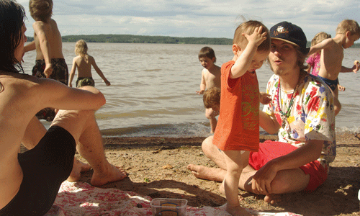
Pyhäjärvi is the second deepest lake in Finland, measured by average depth. The sandy beach rests amidst impressive rocks.
Pyhäjärventie 151, FI-07820 Porlammi
2. PORLOM II
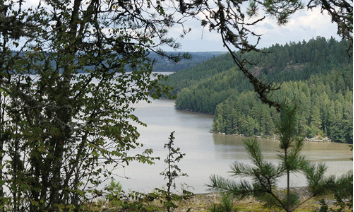
A location in the Struve Geodetic Acr, which is a Unesco World Heritage Site.Nowadays, there is only a monument on the ground instead of the former tower, but the view from Tornikallio across Pyhäjärvi is splendid. The site can be reached by an beautiful 1.5 kilometre trail.
3. The multipurpose lake
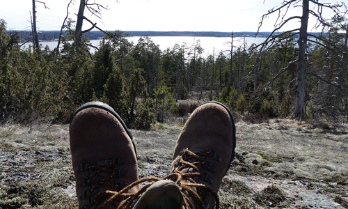
The multipurpose lake in central Lapinjärvi is a popular place for fishing, swimming and other outdoor activities.
In the winter, the lake has a hole for ice swimming, along with skating and skiing tracks. The walking route around Lapinjärvi is a nice outdoor trail of 12.5 km in varying terrain. Along the route, you will find idyllic winding roads, green forests and fields and the historical milieu of the Civilian service centre. There are also picnic sites and a bird watching tower along the route.
六、历史文化
1. 历史
The settlement of the Lapinjärvi area began to develop as early as the Stone Age: seven Stone Age settlements have been found in the Vasarankylä and Lindkoski areas, and there are a total of six other settlements. Thereafter, the following signs of settlement date back to the 13th and 13th centuries, but it is not entirely certain whether Lake Lapinjärvi was an uninhabited area in the period between them.
After the second crusade, eastern Uusimaa was inhabited by Swedish settlers, but there is no exact information as to when they arrived in the Lapinjärvi region. However, it is certain that they arrived before the beginning of the 14th century. At that time, there was a hunting population in the Lapinjärvi area. The settlers settled along the rivers in the southwestern and southern parts of Lake Lapinjärvi, ie in the areas of present-day Lapinkylä, Heikinkylä andIngermaninkylä. Later, the settlers moved along the Taasian River north to the Lindkoski, Vasarankylä and Pukaro areas. The northern parts of Lake Lapinjärvi, ie the current Porlammi and Kimonkylä areas, were probably inhabited by Häme residents. The Kirkonkylä area was already inhabited when the chapel was moved there in the 15th century. It is estimated that there were about twenty farms in Lake Lapinjärvi at the beginning of the 14th century, but in 1544 there were 124 farms, which was due, among other things, to the division of farms and the establishment of new ones in the hinterland.
The date of the birth of the Lapinjärvi Chapel Parish is somewhat obscured: the first mention of the chapel in Ingermaninkylä dates back to 1414. From there, the chapel was later moved to Kirkonkylä in the 1550s. In 1573, the people of Lapland asked King John III for his own pastor. The petition paid off, and on September 15, 1575, John III ordained Lake Lapinjärvi as an independent parish. At the same time, the villages of Pernaja and Pyhtää were connected to it. The first boundaries between the villages of Lapinjärvi and other parishes were drawn as early as the 15th century, but the first map of the whole of Lapinjärvi is from the mid-18th century.
From the 18th century onwards
Population development of Lake Lapinjärvi
In the 18th century, settlement in Lake Lapinjärvi was concentrated on Porlammi (32 farms), Kimonkylä (17 farms) and Pukaro (15 farms). Later in the 19th century, Porlammi was still the largest village in Lapinjärvi (there were 61 farms in 1865), but Heikinkylä (52 farms) and Lindkoski (51 farms) had passed Pukaro and Kimonkylä. The total number of farms in Lake Lapinjärvi had increased from 1730 to 1865 by 206 farms (there were 340 farms in 1865), and the number peaked in 1825, when Lapinjärvi had 375 farms. The increase is explained by the increasing number of equestrian farms that were willing to split their farms. This explains, among other things, the 354% increase in the number of Lindkoski farms (1730–1825). The decrease in the number of farms in the middle of the 19th century, on the other hand, is explained by the merging of farms.
Most of the farms were crown farms in the 18th century, but developments in the art of the 18th and 19th centuries resulted in most of the farms then being heritage farms.
Population statistics for Sweden-Finland began to be compiled in 1749. The compilation of the statistics was the responsibility of the priests. Statistics on births and deaths in Lapinjärvi have been preserved since 1691, but the statistics are not accurate, as during the Great War (1700–1721) some of the people ofLapinjärvi fled to Sweden.
Phenomena affecting the whole country also affected Lake Lapinjärvi: the year of the disappearance of 1697, great anger, petty anger, the rubella epidemic in the mid-19th century and the famine years of the 1860s.
Artjärvi was separated from Lapinjärvi in 1865. The population of Lapinjärvi grew steadily from the 1870s until 1925 and exceeded the limit of 5,000 inhabitants in 1898 (5048 inhabitants). The peak of growth was reached in 1949, when the municipality had 5,420 inhabitants. 2011 Artjärvi joined the city of Orimattila and ceased to be an independent municipality.
World War II
During the Winter and Continuation Wars, two Soviet bombers were dropped and dropped on Lake Lapinjärvi. On March 11, 1940, Olli Puhakka, who was on a flight with Diego Manzocchini, an Italian volunteer, dropped a DB-3 plane that had returned from the direction of Lahti and landed in Kimonkylä.
On August 10, 1941, the Soviet Union Petlyakov Pe-8, who was returning from a bombing flight in Berlin, landed in Rutum. The plaque associated with the case was affixed in 1985.
Post-war time
The population of Lake Lapinjärvi has steadily decreased since the 1950s to the current population of less than 3,000. Lapinjärvi has long been a displacement loss: in the 1960s and 1970s, many people from Lapinjärvi moved to the Helsinki region and Sweden. In 2008, the migration gain was six people. In 2007, Lapinjärvi refused to form a municipal association.
2. 文化
In Lapinjärvi, there are also the Martta Association, the Porlammi and Pukaro village associations, the semi-permanent fire brigade, the Lapinjärvi cultural association LaKu and youth and sports clubs.
youth Clubs
The first youth club, the village of Lindkoski, was founded in Lapinjärvi in September 1896. The name of the association was LindkoskiLantmanna-Ungdomsförering, a belt later developed by HembygdensVänneriLappträsk. The association organized evenings if there were plays, games, and dances. Porlammi's own youth club was founded in Porlammi. Later, youth clubs were also established in Lapinjärvi, Pukaro, Harsbööle together with Lapinkylä, Kimonkylä (Kimonkylä Youth Association, Valonsäde), Vasarankylä and Kirkonkylä, and Heikinkylä, which was merged with Pekinkylä Youth Club in 1915.
Lapinjärvi's first Sports Club was Porlammi'sPyry, which was founded in 1932. Next, competitions will be held when changing in skiing, if the winner of the 20-kilometer competition won a trophy called PyrynTuoppi, hill jumping, boxing, athletics and orienteering. In the 1950s and 1960s, the Porlammi Roar of the Workers' Sports Association operates in Porlammi. The Swedish-language LappträskIdrottsförering ("Liffen", LIF) was founded in 1937. The Finnish-language LapinjärvenLukko was founded worldwide after 1945. The lock's most successful athlete is Brita Blomberg (os Johansson). In the 21st century, a sports club called Pallojunnut was founded in Lapinjärvi.
七、其他信息
Lapinjärvi is not a very strong economic or population town in Finland Uusimaa area. However the historical human cultures and nature environmental eco-system are very special and unique. The religion cultural, such as famous long history churches are played very important rules in Lapinjärvi. For example, the priests were responsible for supervising literacy: parishioners were questioned twice a year with kinkers. In 1780, the church owner and a few nobles complained that there were several illiterate children in the village. This led to the decision to hire children's teachers in each village, but teachers were not available in every village. In 1855, there were 9 village school teachers and 120 children to be taught. In 1856, Alexander II ordered the Senate to develop public education in the country, which was the first step in establishing elementary schools.In the 17th century, the main teaching goal of the common people was literacy, which manifested itself in practice as memorizing the catechism.The parish assembly in 1859 decided to establish village schools, or "schools for young children." The parish was divided into two school districts, each with its own teacher (schoolmaster). The people of Porlammi did not join the rotating school system, but organized their own education and started the municipalities only fixed village school, while there was a rotating village school elsewhere. In 1872, other school districts also had to establish fixed village schools.
八、联系方式
Unit manager: KaarinaLücke - MehiläinenLapinjärviOy
Address: Lapinjärventie 20 A, Lapinjärvi
E-mail: kunta@lapinjarvi.fi
Phone: (019) 510 860
Website: http://www.lapinjarvi.fi
Twitter: lapinjarvi
Instagram: lapinjarvi
